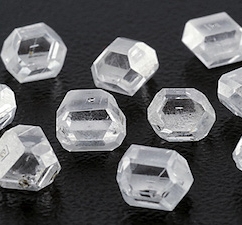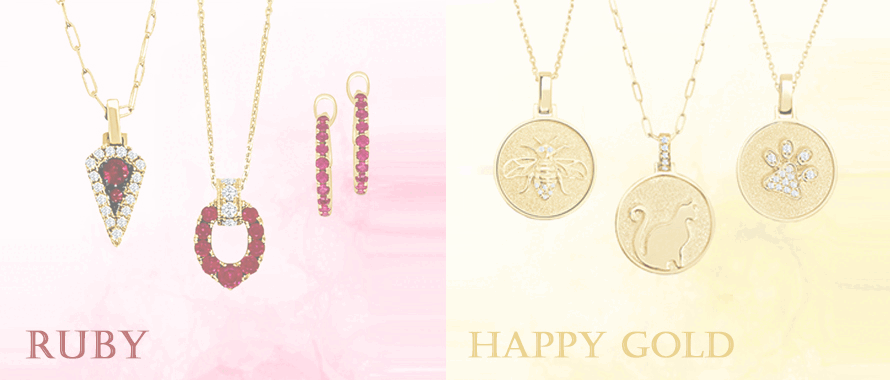Articles and News
Diamond Update: Prices Stay Stable But Financing Is Dire And Synthetic Threat Grows April 06, 2016 (0 comments)

GIA Confirms Chinese Diamond Growers Ramping Up Production
Carlsbad, CA—Just as last week’s edition of The Centurion Newsletter went to press, a report from GIA (Gemological Institute of America) experts confirmed again that the production of high-quality synthetic diamonds in significant sizes and commercially viable quantities is just around the corner.
An article titled “Large Colorless HPHT Synthetic Gem Diamonds from China” by Dr. Wuyi Wang, GIA’s director of research and development, and Thomas Moses, GIA’s executive vice president and chief laboratory and research officer, was published on GIA’s website last week in advance of its appearance in the Spring 2016 issue of GIA’s quarterly journal, Gems & Gemology.
In early March, the researchers visited a diamond factory in China and obtained 50 crystals ranging from about 0.5 to 1.2 carats. All of the crystals—which were examined using the same instrumentation and techniques applied to diamonds submitted to GIA for grading—exhibited the typical characteristics of HPHT growth and were identified as synthetic. The crystals were basically colorless, with only a few metallic inclusions observed. (Top left: A factory in Shandong, China, is producing a large number of colorless HPHT synthetic diamonds for the jewelry industry. These crystals have typical cuboctahedral morphology and weigh up to 3.5 ct. Photo by Jianxin (Jae) Liao; reprinted courtesy of GIA.)
While the total production volume remains unclear, it is undoubtedly significant, and capacity is likely to expand in the near future. This strongly suggests that even more large HPHT synthetic diamonds will be introduced into the jewelry industry.
Here is the text of the article (reprinted with permission from GIA):
High-pressure, high-temperature (HPHT) technology for gem diamond synthesis has made rapid progress in the last few years. It is now being used to produce many melee-size diamonds around 2–3 mm in diameter and large colorless single crystals, all with significantly improved quality and growth rate. One Russian company is reportedly growing multiple large, gem-quality colorless diamond crystals in a single run (U.F.S. D’Haenens-Johansson et al., “Large colorless HPHT-grown synthetic gem diamonds from New Diamond Technology,” Fall 2015 G&G, pp. 260–279). Here we report on large diamond crystals manufactured using a similar technology by Jinan Zhongwu New Materials Co. Ltd in Shandong, China.
We visited the Chinese factory in early March 2016 and obtained 50 crystals (figure 1). The crystals were examined using the instrumentation and techniques applied to all diamonds submitted to GIA for grading; all exhibited the typical characteristics of HPHT growth and were identified as synthetic. These were basically colorless, with only a few metallic inclusions observed. These crystals showed typical cuboctahedral morphology, with well-developed {100}, {110}, and {111} growth sectors and a weakly developed {113} sector. The crystals we obtained ranged from about 0.5 to 1.2 ct each. Absorption spectra in the infrared region showed they were type IIa diamond, but trace absorption from boron was detected (2800 cm–1). Detailed gemological and spectroscopic analyses are ongoing and will be reported separately.
According to the manufacturer, large quantities of gem-quality colorless and blue diamonds are produced in this factory, in sizes up to 3.5 ct each. While the total production volume remains unclear, it is undoubtedly significant, and capacity is likely to expand in the near future. This strongly suggests that even more large HPHT synthetic diamonds will be introduced into the jewelry industry.
Click here for more information on GIA’s website.
Polished Diamond Prices Stable In March; One-Carat Up Slightly In Q1
New York, NY—Polished diamond prices were stable in March, and sentiment in the industry improved for the first quarter overall, according to the latest report from Rapaport.
March diamond prices were supported by steady dealer trading, although the outlook for consumer demand remains uncertain. Profitability increased on select new production. The RapNet Diamond Index (RAPI) for one-carat, GIA-graded diamonds was flat in March. RAPI for 0.30-carat diamonds fell 0.6% and RAPI for 0.50-carat diamonds was unchanged. RAPI for 3-carat diamonds slipped 0.4%. In the first quarter overall, RAPI for one-carat diamonds rose 1.4%, extending the uptrend from the fourth quarter. However, the index fell 4.6% below its level last year. Here is a chart from Rapaport:

Rapaport’s report shows some new polished production sold better than leftover stock. Prices of desirable polished held firm at the March Hong Kong show, but prices of old stock softened as dealers looked to replace difficult-to-sell inventory. The diamond pavilion at the show was busy but the jewelry section was quieter, reflecting restrained Chinese consumer demand.
Diamond trading at the Basel show was slower, demonstrating cautious European luxury demand and weak economic sentiment. Demand was good for rare intense pink and blue diamonds, while big-stone demand was limited to bargains.
A larger volume of polished is expected to enter the market in the coming months, given an estimated 20% rise in manufacturing levels this year following a decline of 40% in the second half of 2015. The number of RapSpec A3 diamonds listed on RapNet--Rapaport’s Diamond Trading Network—increased 30% in the first quarter.
Rough demand is expected to soften in the second quarter as polished production has increased ahead of demand. Rough trading slowed in March, with De Beers goods in short supply as the company did not hold a sight during the month. ALROSA kept its rough prices unchanged for the sixth consecutive month, while rough sold at auctions softened in March but remains expensive.
Following De Beers’ price reduction of seven to 10% in January, manufacturers’ profitability returned as polished prices improved due to shortages created in the second half of 2015. De Beers rough is in demand, as many believe it is currently offering the best value to manufacturers.
The first quarter of 2016 was relatively positive for the diamond trade, but trading was largely driven by dealers looking to replenish select inventory to fill existing orders. Jewelers and diamond dealers are carefully managing their inventory, while consumer demand is uncertain.
The full Rapaport Monthly Report can be purchased here.
Additional Financing for Global Diamond Industry Critical, Says IDE
Ramat Gan, Israel—Israel Diamond Exchange (IDE) president Yoram Dvash has called for an increase in credit lines to finance the diamond industry worldwide. Referring to a Bloomberg Business report that London-based Standard Chartered Bank was demanding additional loan protection from diamond clients in India and Belgium, Dvash said the world diamond industry needs to work together to secure additional financing.
Standard Chartered has about $2 billion in exposure to the diamond industry, and is now asking diamond manufacturing clients to secure payment insurance or provide 100% collateral, according to the Bloomberg report. Receivables will no longer be accepted as collateral.
Dvash said that the U.K. bank’s exposure to the diamond sector is less than 1% of its total business but it is still seeking additional security against possible problems in the future, but Bloomberg says Standard Chartered CEO Bill Winters is taking a very hard look at every business line and is particularly scrutinizing the bank’s exposure to commodities. It has already reduced that sector by 28% and cut exposure to oil and gas producers by 26% as prices in that sector have undergone a record slump. But diamond prices—on a steady downward trajectory since 2014—put the category is in Winters’ crosshairs.
“This shows how tough the situation is for the diamond industry worldwide,” Dvash noted.
Financing has been a leading issue for the World Federation of Diamond Bourses (WFDB) in recent years and will be at the top of the agenda at the World Diamond Congress in Dubai in May.
“Since we depend on a steady supply of credit, we need to work twice as hard to find solutions,” said Dvash. “I will be working with my colleagues from the WFDB at the World Diamond Congress to meet with various stakeholders in the industry, especially banking officials. My aim is to persuade them that backing the diamond industry makes good business sense.”
“I hold regular meetings with banks in Israel. I explain that the Israeli diamond sector is very prudent in business decisions. Our global approach to business diversifies risk and increases trading opportunities.
“We must secure more credit lines in order to expand the business. Let us remember that the diamond trade does not only employ tens of thousands in diamond centers, but millions of people around the world—in Africa, India, China and elsewhere—are dependent for the livelihood on the success of the diamond trade,” he stressed.







